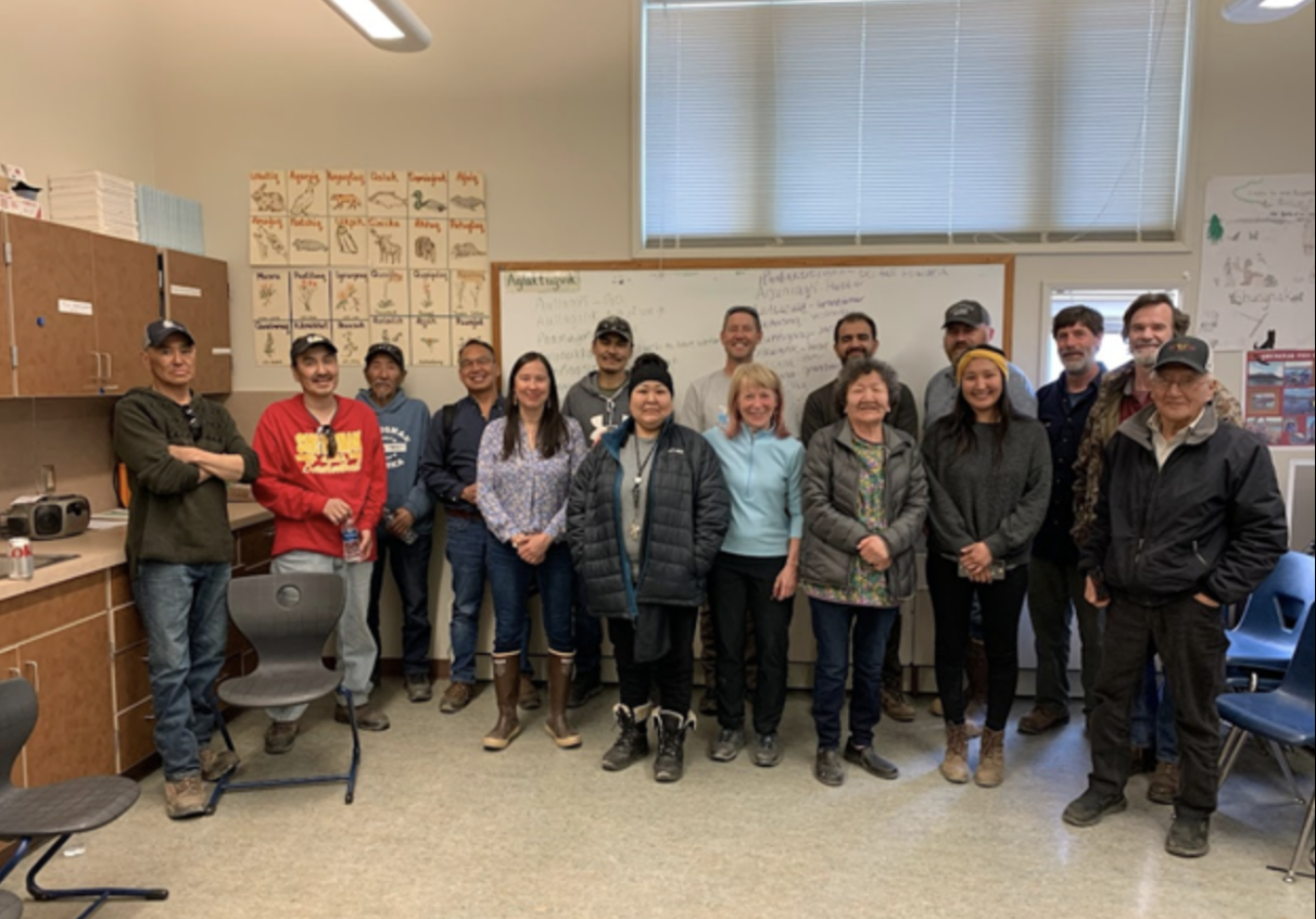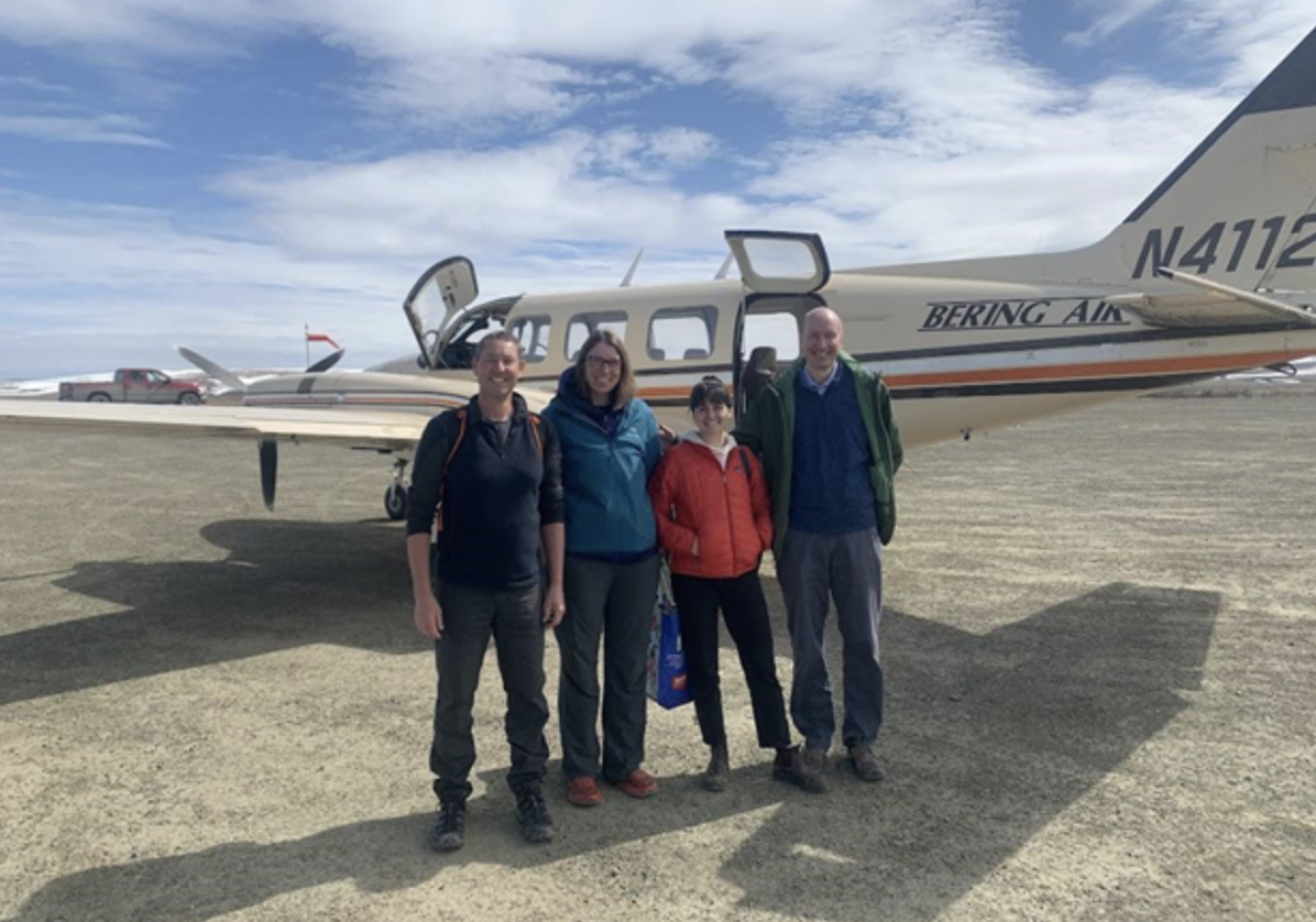Here’s a review of some of the key moments of engagement former Senior Advisor Matt Heavner has gotten to be part of in fulfilling the Arctic Energy Office’s mission.
November 3, 2023This week I am wrapping up a three-year assignment from Los Alamos National Lab to the Department of Energy (DOE) headquarters, where I have had the honor to serve as a Senior Advisor to the Arctic Energy Office. As I am reflecting on all of the activities over the past years, I keep returning to the biggest impact that our office has had - bringing greater awareness of the Arctic to DOE. During my time at the Arctic Energy Office, the Department of Energy demonstrated its strong commitment to Arctic work and engagement through the December 2022 release of the DOE Arctic Strategy, and engagements over the following years that put actions to this strategy.
Here’s a review of some of the key moments of engagement I’ve gotten to be part of in fulfilling the Arctic Energy Office’s mission to bring the Department of Energy to the Arctic and the Arctic to the Department of Energy, our office’s tagline – which I was proud to have created during my tenure at the office.
Engagement with Tribal Communities
One memorable example was DOE Under Secretary for Science and Innovation Dr. Geraldine Richmond visiting Shungnak, Alaska - north of the Arctic Circle - to meet with the Native Village of Shungnak Tribal Council and see the renewable energy deployment at Shungnak. I was able to coordinate this visit, and host DOE Principal Deputy Under Secretary for Science and Innovation Dr. Ali Douraghy, DOE Under Secretary for Science and Innovation Dr. Geraldine Richmond, and my colleage DOE Arctic Energy Senior Advisor Givey Kochanowski on this engagement.


Engagement with Partners in Alaska
The Department of Energy (DOE) Arctic Energy Office worked with Alaska Governor Mike Dunleavy to facilitate DOE participation at the Governor’s Alaska Sustainable Energy Conference. In 2022, this included the ArcticX event, a full-day DOE event on the Monday before the Alaska Sustainable Energy Conference in Anchorage, Alaska. The ArcticX event was a partnership between DOE’s Office of Technology Transitions and the Arctic Energy Office. The recordings and more artifacts from ArcticX are at /arcticx/.
In 2023, the DOE engagement with the Alaska Sustainable Energy Conference included the participation of DOE Deputy Secretary David Turk. As part of Deputy Secretary Turk’s visit, I supported the Arctic Energy Office's work to facilitate the Deputy Secretary's time in the State, visiting Teller and Nome Alaska to understand the energy challenges as well as the DOE Office of Science's work researching the impacts of climate change on the Seward Peninsula.

DOE visitors included (R-L) Deputy Secretary David Turk, Special Advisor to the Deputy Secretary Sandie Raines, Arctic Energy Office Director Erin Whitney, and me on the left.
Engagement with the National Laboratories
The 17 DOE National Labs are a tremendous scientific and technology national resource. Part of my work at the Arctic Energy Office over the past three years has been to increase the coordination and impact of DOE National Lab Arctic work, which spans modelling of Arctic climate change by multiple labs (supported by DOE’s Office of Science) to building efficiency improvements with NREL’s Alaska Campus (primarily supported by DOE’s Office of Energy Efficiency and Renewable Energy) to regional energy planning(supported by DOE’s Office of Indian Energy Policy and Programs that led in part to the renewable energy deployment in Shungnak, described above) to Sandia National Labs operating the airspace at Oliktok Point.
The Arctic Lab Partnerships (ALPs) has participation from a majority of the DOE National Labs. ALPs was a critical partner for ArcticX and DOE engagement at the Alaska Sustainable Energy Conference described above.
Engagement with the Global Arctic
Over the past three years, DOE, through the Arctic Energy Office, has increased the level of broader interagency U.S. government Arctic coordination through participation in the U.S. Interagency Arctic Research Policy Committee (IARPC) and the U.S. Arctic Research Commission (USARC) as well as active involvement in the development and implementation plan of the new U.S. National Strategy for the Arctic Region.
Our Office also worked directly with international partners at events such as Arctic Circle Assembly and elsewhere to foster collaboration and cooperation for several years, including earlier this month when my colleagues attended the 2023 Arctic Circle Assembly,

In reflecting on my past three years in the Arctic Energy Office, I will always cherish the work and progress made with people across DOE, the DOE Labs, and the Arctic! North to the future!
Matt Heavner

Dr. Matt Heavner was a Senior Advisor to the Arctic Energy Office from 2020 - November 2023. Dr. Heavner came to the Arctic Energy Office from Los Alamos National Laboratory (LANL), where he is working again now as the Climate and Clean Energy Coordinator.
Dr. Heavner first joined LANL in 2000. Matt was a program manager focused on data science applied to critical national security and scientific challenges. Matt was the Assistant Director of Global Security at the White House Office of Science and Technology Policy (OSTP) during 2014-2016. Matt led OSTP efforts on topics including Arctic, space, and a range of nuclear issues. In partnership with the National Security Council, Matt co-chaired multiple White House restricted Interagency Policy Coordination committees. At LANL, Matt served as the project leader for nuclear test ban verification sensors on the Global Positioning Satellite constellation. From 2003-2010, Matt was a Professor of Physics at the University of Alaska Southeast with diverse geophysical interests. Matt earned his PhD in Physics from the University of Alaska Fairbanks and his bachelor degrees in Physics, Mathematics, and Philosophy from Southwestern University.

